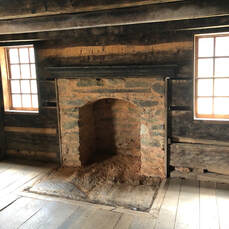|
1/8/2019 Preserving Public History This is an ode to those public historians who went out of their way to write and publish local history that would otherwise have been forgotten. Whether it was about their own past experience, or the history of a place, these books are gems for those of us writing historical fiction. They are accounts of the ordinary people, ones who may not have been famous, but whose lives are the fabric of the past. I've found my share of these treasures while researching my novels.  The Durant Family Saga historical trilogy is set in New York City, the Adirondacks, and England. When I decided to include the theme of horse racing in England during the Victorian era I scoured the internet for ideas, facts, stories. I happened upon a small book titled, The Brighton Races (2003) set in Brighton, U.K. and about the history of their local racetrack. Bonanza! I had a setting for my book. But it wasn't for sale online anywhere. It was out of print. Luckily, I have a friend who lives in Brighton. I contacted him and he was able to find one of the last copies in the local bookstore. I would never have been able to include the amount of detail without this book. The author writes about a man who placed a bet on a horse with 20/1 odds and winning £4,000 (worth £175,000 in today's money). I had no idea that spectators could eat such delicacies as jellied eel, (or would want to). While browsing in a used bookstore in Ithaca, NY, I found a book written by a County historian, Tales from an Adirondack County (1961) about the Adirondacks mountains. Reading this book I found out that in 1886 in the town of Long Lake there was a $10 bounty on bears. I read that William Durant (the main character in my novels) flooded the summer homes on the Long Lake to build a dam- against the town's wishes, so he could run a steamboat line. The foreword of this book conveys the importance of these sources: No work that seeks to tell the stories of the people can ever be the work of the authors alone. It was the people of the Central Adirondacks who wrote the stories. It was the people who passed them on to younger generations. I heartily agree. These are not the type of stories that would make it into history textbooks, rather they are the folklore that make a region unique, special, and worth writing about. Used bookstores are great for finding regional history books but perhaps the best place to find in-print books are local museums. While working on a novel set in the Great Smoky Mountains National Park during the Depression, I visited the Great Smoky Mountains Heritage Center in Townsend, TN. There I found personal biographies written by families who had grown up in the region during that time period, specifically stories of the farm families who lost their land when the National Park was developed. Even the mundane takes on new meaning when one realizes that the places and people are no longer living in the area, forced out when the nation decided the area should be a National park. How interesting it was to discover from reading Cades Cove: a Personal History (2014) that places I hiked were once grassy-balds used for cattle grazing. Families drove their cattle in May of each year up the mountain trails so they could graze over the summer. Herders were hired for $1.00 per head to watch over them, prevent them from eating snake-root, and getting 'milk sickness'. On Labor Day, the herders brought the cattle back down the mountain to their homestead. Although I could conduct my own research by scanning digital versions of local newspapers, there's a big difference between these public history books and the sensationalism often found in journalism. In public history one finds unguarded expressions of pride. Reading the history of Cades Cove in the Smoky Mountains makes this clear: "Contrary to what some misinformed and uniformed persons may have believed and written, the people of Cades Cove, for the most part, lived well. They produced a great variety of food..." And the author goes on to explain how they grew and preserved their food, tended to bee hives, and carded their own wool. When re-imaging history for fiction, sometimes it's these small details that matter the most. Comments are closed.
|
AuthorSheila Myers is an award winning author and Professor at a small college in Upstate NY. She enjoys writing, swimming in lakes, and walking in nature. Not always in that order. Archives
April 2024
CategoriesAll Adirondacks Algonquin Appalachia Award Cades Cove Canada Chestnut Trees Christmas Civilian Conservation Corps Collis P. Huntington Creativity Doc Durant Durant Family Saga Emma Bell Miles Finger Lakes Great Depression Hell On Wheels Historical Fiction History Horace Kephart Imagination National Parks Nature Publishing Review Screenplay Short Story Smoky Mountains Snow Storm Stone Canoe Literary Magazine Thomas Durant Timber Wilderness World War II Writing |
|
|
All materials Copyright 2022
Any reproduction, reprint or publication without written consent of author prohibited. |

 RSS Feed
RSS Feed